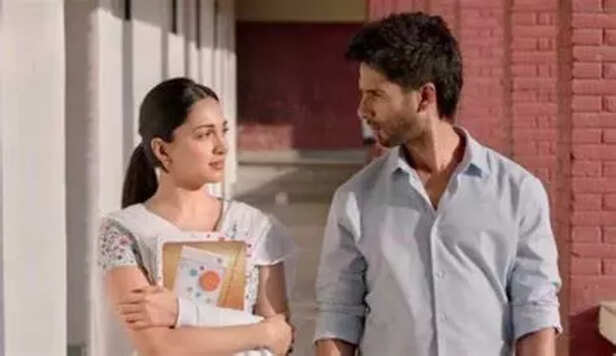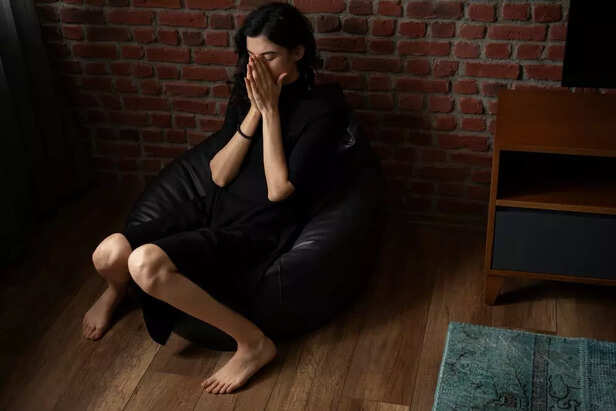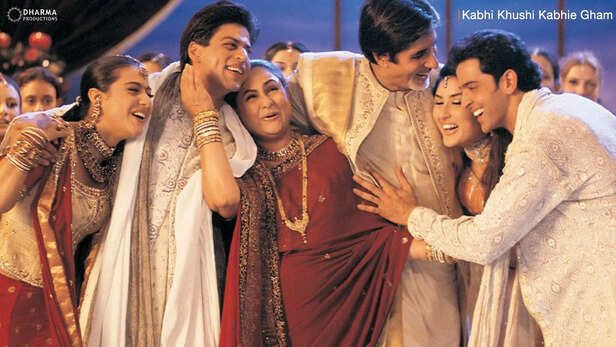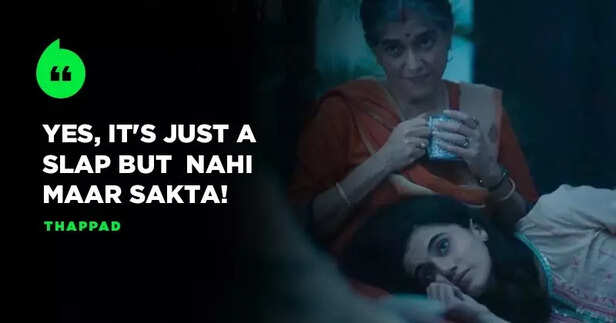Conditioned to Cry: The Origins of Emotional Stereotypes in Women
Nidhi | Jan 04, 2025, 14:06 IST

Emotional vulnerability has long been associated with women, perpetuated by societal norms, cultural narratives, and even biological misconceptions. But are women truly more emotional than men, or is this a conditioned stereotype that we’ve all internalized over time? Understanding this question requires a deep dive into historical context, scientific studies, and popular culture, including the influence of Bollywood movies.
Emotional vulnerability has long been associated with women, perpetuated by societal norms, cultural narratives, and even biological misconceptions. But are women truly more emotional than men, or is this a conditioned stereotype that we’ve all internalized over time? Understanding this question requires a deep dive into historical context, scientific studies, and popular culture, including the influence of Bollywood movies.

The perception of women as emotionally weak finds its roots in patriarchal societies where emotions were often weaponized against them. Historical texts and religious doctrines frequently reinforced the idea that women’s emotional nature made them inferior decision-makers. For example, in ancient Greek philosophy, Aristotle argued that women were more prone to emotions and, therefore, less rational than men.
Culturally, the act of crying has been feminized. Boys are often told to "man up" or "stop crying," while girls are encouraged to express their feelings. This differential treatment, ingrained from childhood, molds emotional responses. A study by the American Psychological Association (APA) revealed that children as young as three begin associating certain emotions with specific genders, with sadness being linked predominantly to girls.

While hormones like estrogen and oxytocin can influence emotional responses, they do not singularly determine a person’s emotional strength. Studies published in the journal Psychological Science suggest that while women may experience emotions more intensely, men are equally capable of emotional expression—they’re just socialized to suppress it.
Dr. Louann Brizendine, a neuropsychiatrist, notes in her book The Female Brain that women’s brains have more connections between the left and right hemispheres, which could contribute to heightened emotional awareness. However, this does not imply weakness; instead, it suggests an enhanced ability to process emotions. Despite this, societal narratives continue to overshadow biological facts, framing women’s emotional depth as a liability rather than an asset.

Media, particularly Bollywood, has played a significant role in perpetuating emotional stereotypes. Female characters are often portrayed as overly sensitive, emotional, and dependent on male counterparts for resolution. For example:
These portrayals subtly condition audiences to equate femininity with emotional dependency and weakness, sidelining examples of women displaying resilience.
However, Bollywood is evolving. Films like "Chhapaak" (2020) and "Raazi" (2018) showcase women who navigate their emotional struggles with strength and agency. These narratives challenge traditional stereotypes, offering a more nuanced representation of female emotions.
In real life, women’s emotional strength often emerges in challenging circumstances. Consider the resilience of women leaders like Jacinda Ardern, the former Prime Minister of New Zealand, who balanced empathetic leadership with decisive action during crises like the Christchurch mosque shootings and the COVID-19 pandemic. Her emotional intelligence was praised globally, debunking the notion that emotions hinder leadership.
Closer to home, everyday situations reveal the emotional labor women undertake. For instance, working mothers often juggle professional responsibilities with caregiving roles, requiring immense emotional resilience. Yet, their emotional expressions are frequently dismissed as “overly sensitive” or “hysterical.”

To break the cycle of emotional stereotyping, it’s crucial to address both systemic and cultural conditioning. Here are some actionable steps:
The stereotype of women being emotionally weak is less about biological reality and more about societal conditioning. While hormonal and neurological factors influence emotional responses, they do not define emotional strength or resilience. Instead, cultural norms and media narratives have played a significant role in shaping these perceptions.
As society evolves, so too must our understanding of emotions. By challenging stereotypes, promoting emotional equality, and celebrating emotional intelligence, we can move toward a world where tears are seen not as a sign of weakness but as a testament to humanity. After all, the ability to feel deeply—and to cry—is a strength, not a shortcoming.
Historical Context and Societal Norms

Kabir Singh
The perception of women as emotionally weak finds its roots in patriarchal societies where emotions were often weaponized against them. Historical texts and religious doctrines frequently reinforced the idea that women’s emotional nature made them inferior decision-makers. For example, in ancient Greek philosophy, Aristotle argued that women were more prone to emotions and, therefore, less rational than men.
Culturally, the act of crying has been feminized. Boys are often told to "man up" or "stop crying," while girls are encouraged to express their feelings. This differential treatment, ingrained from childhood, molds emotional responses. A study by the American Psychological Association (APA) revealed that children as young as three begin associating certain emotions with specific genders, with sadness being linked predominantly to girls.
The Role of Biology

Emotional Attachment
While hormones like estrogen and oxytocin can influence emotional responses, they do not singularly determine a person’s emotional strength. Studies published in the journal Psychological Science suggest that while women may experience emotions more intensely, men are equally capable of emotional expression—they’re just socialized to suppress it.
Dr. Louann Brizendine, a neuropsychiatrist, notes in her book The Female Brain that women’s brains have more connections between the left and right hemispheres, which could contribute to heightened emotional awareness. However, this does not imply weakness; instead, it suggests an enhanced ability to process emotions. Despite this, societal narratives continue to overshadow biological facts, framing women’s emotional depth as a liability rather than an asset.
Conditioning Through Media

Kabhi Khushi Kabhi Gham
Media, particularly Bollywood, has played a significant role in perpetuating emotional stereotypes. Female characters are often portrayed as overly sensitive, emotional, and dependent on male counterparts for resolution. For example:
- "Kabhi Khushi Kabhie Gham" (2001): The character of Nandini (played by Jaya Bachchan) is depicted as a quintessential emotional mother whose tears are central to family unity. Her emotional outbursts reinforce the idea that women are the caretakers of familial harmony.
- "Kal Ho Naa Ho" (2003): Naina (played by Preity Zinta) embodies the stereotype of a melancholic woman whose emotional fragility is a recurring theme in the narrative. Her character arc depends heavily on male intervention to find closure.
However, Bollywood is evolving. Films like "Chhapaak" (2020) and "Raazi" (2018) showcase women who navigate their emotional struggles with strength and agency. These narratives challenge traditional stereotypes, offering a more nuanced representation of female emotions.
Real-Life Examples and Situations
Closer to home, everyday situations reveal the emotional labor women undertake. For instance, working mothers often juggle professional responsibilities with caregiving roles, requiring immense emotional resilience. Yet, their emotional expressions are frequently dismissed as “overly sensitive” or “hysterical.”
Challenging the Stereotypes

Thapad
To break the cycle of emotional stereotyping, it’s crucial to address both systemic and cultural conditioning. Here are some actionable steps:
- Redefining Masculinity: Encourage men to express emotions freely, challenging the stigma associated with male vulnerability. This can balance the narrative around emotional expression.
- Media Representation: Demand more nuanced portrayals of women in films and television. Stories that highlight emotional strength without reducing women to one-dimensional characters can shift public perception.
- Education and Awareness: Incorporate emotional intelligence training in schools to teach children that emotions are human, not gender-specific.
- Open Conversations: Normalize discussions about emotions in professional and personal spaces, breaking the taboo around emotional expression for all genders.
As society evolves, so too must our understanding of emotions. By challenging stereotypes, promoting emotional equality, and celebrating emotional intelligence, we can move toward a world where tears are seen not as a sign of weakness but as a testament to humanity. After all, the ability to feel deeply—and to cry—is a strength, not a shortcoming.
